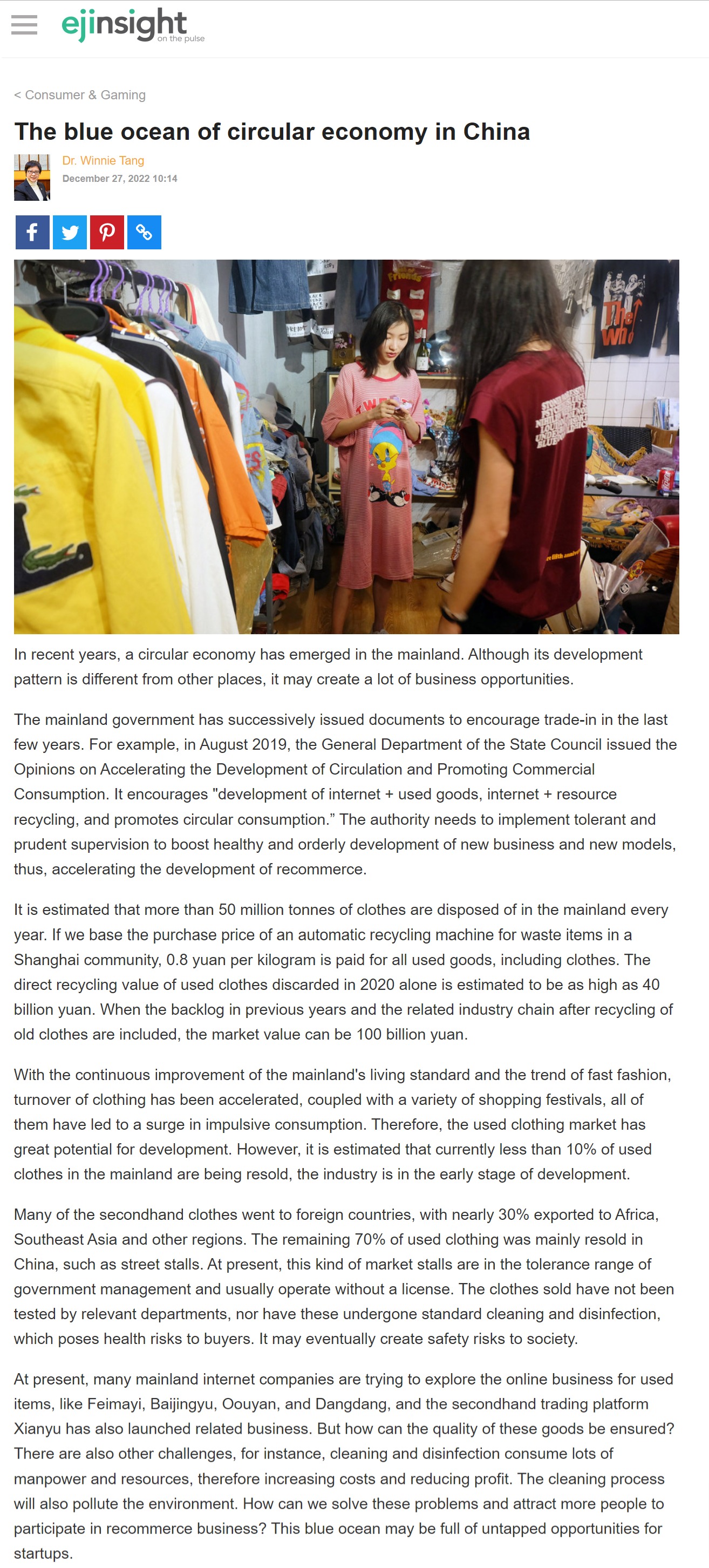網上版請按此

The blue ocean of circular economy in China
In recent years, a circular economy has emerged in the mainland. Although its development pattern is different from other places, it may create a lot of business opportunities.
The mainland government has successively issued documents to encourage trade-in in the last few years. For example, in August 2019, the General Department of the State Council issued the Opinions on Accelerating the Development of Circulation and Promoting Commercial Consumption. It encourages "development of internet + used goods, internet + resource recycling, and promotes circular consumption." The authority needs to implement tolerant and prudent supervision to boost healthy and orderly development of new business and new models, thus, accelerating the development of recommerce.
It is estimated that more than 50 million tonnes of clothes are disposed of in the mainland every year. If we base the purchase price of an automatic recycling machine for waste items in a Shanghai community, 0.8 yuan per kilogram is paid for all used goods, including clothes. The direct recycling value of used clothes discarded in 2020 alone is estimated to be as high as 40 billion yuan. When the backlog in previous years and the related industry chain after recycling of old clothes are included, the market value can be 100 billion yuan.
With the continuous improvement of the mainland's living standard and the trend of fast fashion, turnover of clothing has been accelerated, coupled with a variety of shopping festivals, all of them have led to a surge in impulsive consumption. Therefore, the used clothing market has great potential for development. However, it is estimated that currently less than 10% of used clothes in the mainland are being resold, the industry is in the early stage of development.
Many of the secondhand clothes went to foreign countries, with nearly 30% exported to Africa, Southeast Asia and other regions. The remaining 70% of used clothing was mainly resold in China, such as street stalls. At present, this kind of market stalls are in the tolerance range of government management and usually operate without a license. The clothes sold have not been tested by relevant departments, nor have these undergone standard cleaning and disinfection, which poses health risks to buyers. It may eventually create safety risks to society.
At present, many mainland internet companies are trying to explore the online business for used items, like Feimayi, Baijingyu, Oouyan, and Dangdang, and the secondhand trading platform Xianyu has also launched related business. But how can the quality of these goods be ensured? There are also other challenges, for instance, cleaning and disinfection consume lots of manpower and resources, therefore increasing costs and reducing profit. The cleaning process will also pollute the environment. How can we solve these problems and attract more people to participate in recommerce business? This blue ocean may be full of untapped opportunities for startups.
Dr. Winnie Tang
Adjunct Professor, Department of Computer Science, Faculty of Engineering; Department of Geography, Faculty of Social Sciences; and Faculty of Architecture, The University of Hong Kong